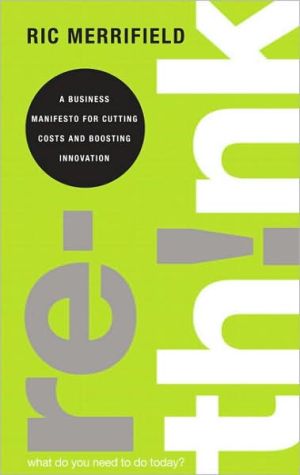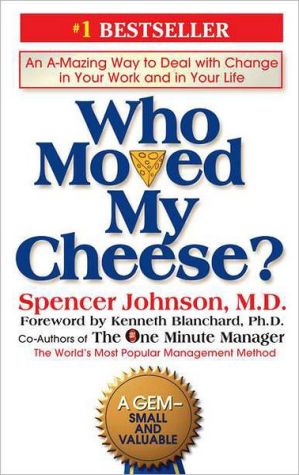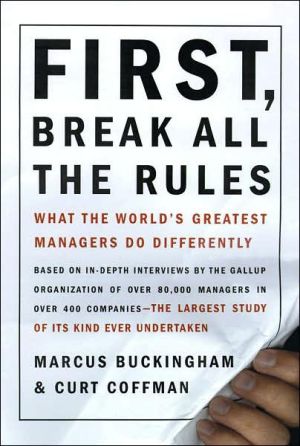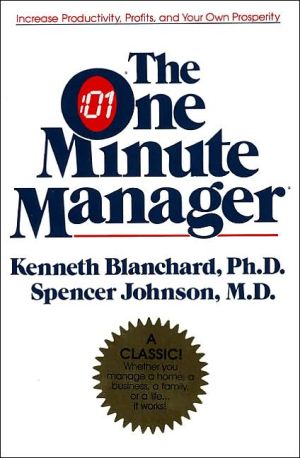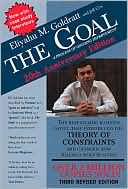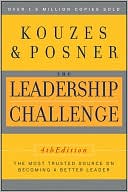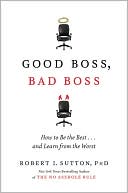Rethink: A Business Manifesto for Cutting Costs and Boosting Innovation
It's a totally human condition, a trap that ensnares virtually everyone. Just as when we tie a route to a destination so much so that when someone else takes a different route "why are we going this way?" it usually doesn't matter "how" you get there. This "how" trap also takes place at work, people intertwine "how" they do their job with the outcome of "what" they are doing that sometimes obvious decisions are masked, and missed. We know how to focus on process: the how of business. That's...
Search in google:
It’s the trap that ensnares virtually every business.We focus on process: “how” we’re doing the job. And we forget about the bigger issue: “what” we’re doing and “why” we’re doing it. That’s why we’re leaving so much value on the table. In Rethink, business architect Ric Merrifield exposes this problem with vivid examples and introduces breakthrough techniques for overcoming it.Merrifield shows how to rise above the clutter of your “hows” to expose what does and doesn’t need attention in your organization. You’ll learn to identify the activities most critical to success, as well as those that are borderline, redundant, or even counterproductive. Merrifield helps you get past the parochial, subjective viewpoints of ground-level participants...find more cost-effective ways to achieve core goals...capture better information for prioritizing investments...identify hidden sources of value...use technology-driven plug-and-play management to increase efficiency and agility...and reconfigure your company to ride nonstop waves of change.Along the way, Merrifield presents powerful case studies ranging from ING DIRECT to Amazon.com to Procter & Gamble. These diverse companies have learned how to cut costs, strengthen innovation, and profit from change all at the same time. Using the lessons in this book, you can, too.• Rise above low-level processes and narrow perspectives• Step back, identify what really matters to the organization, and act accordingly• Understand the hidden connections that can make or break your business• Make profitable changes without setting off destructive chain reactions• Expose activities where people, process, and technology matter...and, equally important, where they don’t
IntroductionIntroduction\ This book had its genesis around the turn of the millennium. At the time, many large companies were adopting two kinds of software programs that transformed the way businesses were run. Customer relationship management (CRM) software measured and controlled contacts with customers from marketing, through sales, and into support and other services. Enterprise resource planning (ERP) software helped manage inventory, logistics, accounting, and virtually every other aspect of an organization.\ We at Microsoft were aware that the CRM and ERP programs were coloring companies’ decisions about which computer systems to buy—and there we were sitting on the sidelines. So we decided to create our own business application software. There was one small problem: We lacked in-depth knowledge of our potential customers’ operations.\ The team that was assembled to explore this terra incognita suggested the creation of a detailed map of a hypothetical company’s essential business activities. It began with an outline of an archetypal business’ five top activities—or as we initially called them, “capabilities”—that included the following:\ \ Create Products and Services\ Generate Demand\ Deliver Products and Services\ Plan and Manage the Business\ Manage Collaboration\ \ The more the team examined these high-level capabilities, the more it saw them as overall categories encompassing hundreds of lesser, though still vital, capabilities that it set down in descending order. Under “Generate Demand,” for example, were listed several major capabilities, including “Market Products and Services,” which, in turn, sat atop a group of capabilities that included “Manage Marketing”—and so it went.\ Eventually, the team had a list of literally hundreds of universal capabilities that covered about 80 percent of all business activities and constituted an entire nomenclature for every company anywhere on earth. When presented in map form, the list filled a six-by-six-foot poster that, ironically, looked like a giant blowup of a computer chip. It described not just a company, but the workings of everything and everyone connected with the business.\ The map served admirably as a means of orienting Microsoft salespeople to the complex operations of potential customers. But it also took on a life of its own.\ It turned out that the map, tailored to take into account the differences between industries, gave the company leaders we called on a unique overview of their operations. Laying out their capabilities in discrete, interconnected chunks—LEGO bricks, if you will—made it much simpler for them to spot and eliminate duplications and determine which elements of their operations to keep and which to outsource or automate.\ In what proved to be a happy coincidence, the map emerged just as two major developments—Web 2.0 and service-oriented architecture (SOA)—were starting to revolutionize business management. The advent of Web 2.0 helped the Internet evolve from a mere collection of Web sites to a complete computing platform. Now, we could create Web-based software applications and operate them for our customers. Companies communicated and shifted work as never before. At the same time, SOA was beginning to gain momentum, making it possible to see the relationships between and among the hundreds of capabilities within a company—and with its suppliers and customers as well. Suddenly, business leaders could automate, share, outsource, even sell one or another element of their operations without going through the messy analytics of interfaces and integration.\ The power of the map, the third piece of the puzzle, was now even more of a boon to business performance. It provided the words to cut through the proprietary languages that are so pervasive at many companies (ours included), and it served to fully unlock the potential of SOA and the Internet.\ Since its first appearance, the map has grown and evolved. The master list of typical capabilities, for example, has been substantially expanded. Beyond that, the basic concept of a capability has been enlarged and made part of the overarching new approach to management that is the topic of this book. These ideas received their first public airing in a June 2008 Harvard Business Review article written by the author of this book together with Jack Calhoun of Accelare and Dennis Stevens of Synaptus.\ And as the approach has evolved, the term “capability” has been more precisely refined. Now the focus is on the desired outcomes of an activity—what it does as opposed to how it is done. So instead of speaking of capabilities in the pages ahead, they are referred to as “whats.” The distinction is important, particularly because management theory in recent decades has focused so strongly on how-oriented programs such as reengineering and Six Sigma. It has also helped make the approach basic enough to be understood and applied by employees at every level of a company.\ Microsoft’s product philosophy has undergone a major evolution as well. Today, we view the future of our corporate customers as being tied to the interaction of local software and Internet services; the architectural-design power of SOA is wedded to the managerial power of Web-based software-as-a-service (SaaS). We call the combination Software Plus Services, or S+S.\ Information technology, per se, does not receive a great deal of attention in this book. That’s because IT is a means to an end rather than an end in and of itself—a “how” rather than a “what”—and this book is essentially about helping leaders to better comprehend and manage their “whats.” From a Microsoft point of view, that is a devoutly wished-for consummation, because if our customers don’t know what their companies require, we have a hard time helping them decide how best to get there.\ As these words are being written, the economic climate in the United States has taken a distinctly worrisome turn. A recession represents yet another challenge for business leaders already facing cruel competition, globalization, and the vagaries of ever more fickle and demanding customers. This book offers a new, yet proven, approach that has enabled many companies to achieve vastly greater efficiency and flexibility. May it do the same for you, too.\ Praise for re-think!\ “Before you can realize the full potential of cloud-based computing strategies, you need a way to grasp the essentials of what makes a business perform. Merrifield’s breakthrough thinking will get you there, in clear, practical, and sometimes, fun ways.”\ — Rita G. McGrath, author of Discovery-Driven Growth\ “ Rethink comes at a crucial time–one in which companies must concentrate on the very few areas that truly add value to customers. As Merrifield explains, what companies can and should outsource–the distractions of everyday business–has changed radically because their operations today are so rooted in software and so easily shared over the Internet.”\ — Michael Treacy, author of Double-Digit Growth\ “ Merrifield’s book is a much-needed fresh perspective on prioritization, simplification, and careful task allocation that more fully leverages technology and tools few could have imagined ten years ago.”\ — Scott Bedbury, author of A New Brand World\ “ Companies today need to rethink their whole business model, and process thinking alone won’t get you there. In this book, Merrifield takes the art of business design to a science.”\ — James Champy, coauthor of Reengineering the Corporation, and author of INSPIRE!: Why Customers Come Back\ “ Merrifield maps out the key ‘whats’ in a new approach to redefining your business. This is the new In Search of Excellence that takes you inside many companies that have been rethought using his principles.”\ — Robert Scoble, author and evangelist on the blog Scobleizer\ © Copyright Pearson Education. All rights reserved.
Introduction 1Chapter 1 How the “How” Trap Is Trapping You 7Chapter 2 The Thinking Behind Rethinking 27Chapter 3 First–Identify the "Whats" That Are Truly Valuable 39Chapter 4 Second–Know What You Are (and Aren’t) Good At 61Chapter 5 Third–Make (and Break) Connections 77Chapter 6 Fourth–Understand What Can (and Can’t) Be Predicted 91Chapter 7 Fifth–Unravel (and Follow) the Rules 109Chapter 8 Revolutionary Rethinking at ING DIRECT 117Chapter 9 Rethinking at Eclipse 133Chapter 10 Rethinking at Cranium 151Chapter 11 Morph Again and Again 169Key Concepts 193Index 213
